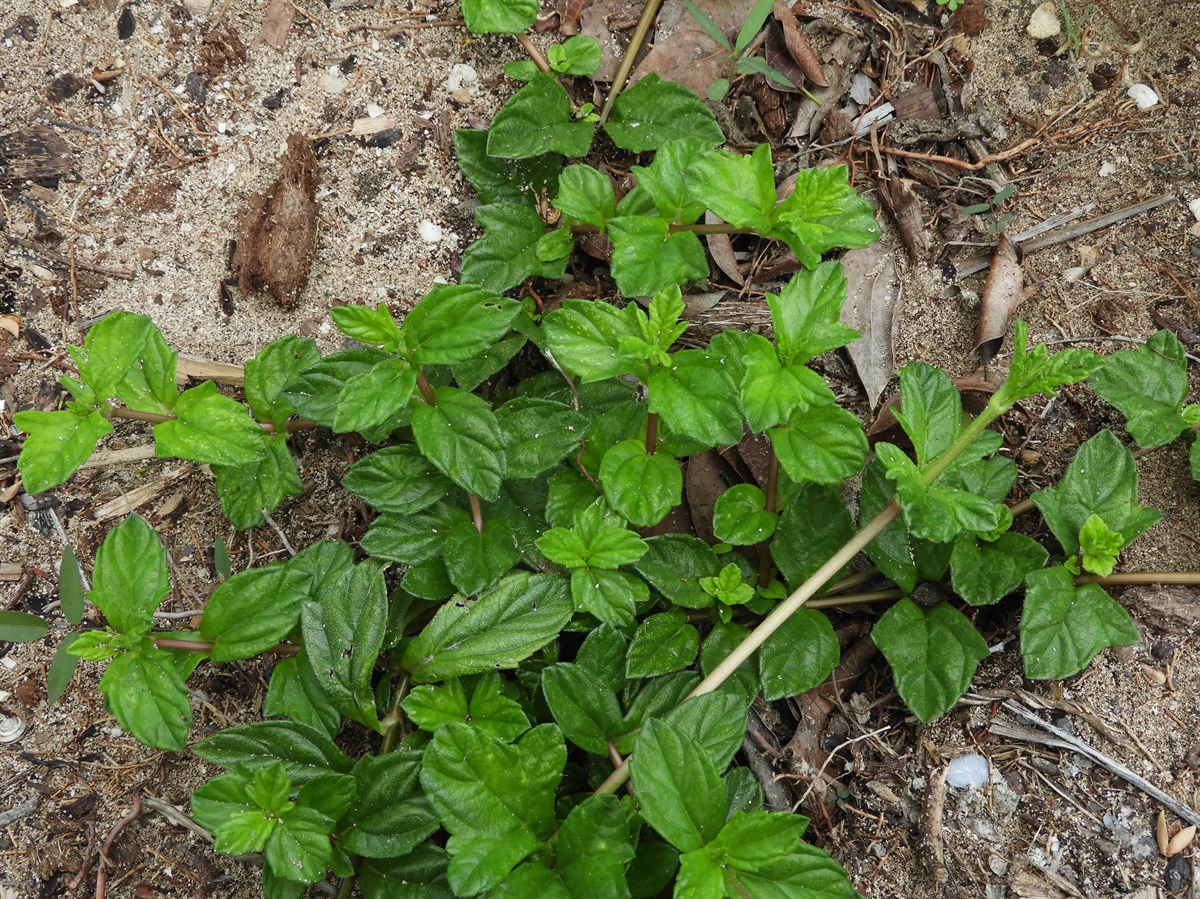Habit: Sphagneticola trilobata a creeping perennial herb to 20 cm in height that roots at the nodes. The leaves are arranged oppositely, to 12 cm in length (usually smaller), elliptic to ovate, with a dentate/3-lobed leaf margin and an obtuse to acute leaf apex. The leaves have 3 prominent veins.
The actinomorphic flowers are arranged in heads. The heads are subtended by a series of involucral bracts. The calyx is modified as a ring of hairs (pappus). There are both perfect and imperfect (carpellate) flowers in the heads. The perfect flowers are in the center and the imperfect flowers are arranged around the edge of the heads. Each flower is subtended by a bract.
The incomplete, imperfect flowers have 3 yellow fused petals and no stamens. The perfect flowers have a corolla with 5 fused, yellow petals. There are 5 stamens fused at their base. In both types of flowers, the ovary is inferior with a single locule but only the imperfect flowers have functional ovules. The fruit is an achene at maturity that retains the modified calyx (pappus) that is fused forming a shallow cup.
Habitat: Sphagneticola trilobata grows in Human Altered environments (yards, gardens, abandoned fields
Distribution: Sphagneticola trilobata is NOT native to the Lucayan Archipelago. It is native to Mexico, Central and South America. It now occurs in Australia, the Indian subcontinent, and parts of Asia and Africa.
Medicinal/Cultural/Economic usage: Sphagneticola trilobata is not known to be used medicinally in the Lucayan Archipelago.
Sphagneticola trilobata is an INVASIVE species.

